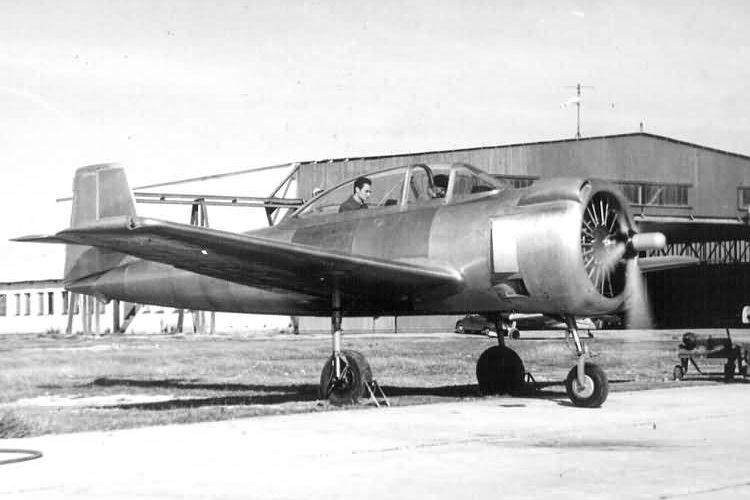09/30/2007. Remarks by Johan Visschedijk: "As after WW II the design and production of aircraft were prohibited in Germany, several German aircraft designers/manufacturers looked abroad for work in their specific professions. Willy Messerschmitt opened an office in Spain, named "Officina Technica Prof. Messerschmitt". In December 1951 Hispano Aviación SA and Messerschmitt signed a contract covering the design and construction of an operational piston-engined trainer (HA-100), an advanced jet-trainer (HA-200), and a supersonic fighter (HA-300). On January 1, 1952, Professor Messerschmitt and his team started work at Hispano, Seville, Spain.
In June 1951 the Spanish Air Ministry issued a tender for a replacement of the Hispano HS-42 and HA-43. Messerschmitt response was the tandem two-seat trainer HA-100, his first design after WW II. Two prototypes were built of each version, the HA-100-E1 initial-trainer and the HA-100-F1 advanced-trainer.
Although of simple construction the aircraft could be fitted with engines of diverse size and power, however, apart from delays in equipment deliveries the engine was the most troublesome part. Envisaged was the 450 hp ENMASA Sirio S-VIIA seven-cylinder air-cooled radial, due to the fore-mentioned reasons the older and heavier 750 hp ENMASA Beta E-9C was used instead.
The HA-100-E1 is pictured during engine tests before the first flight, that was made on December 10, 1953, 26 months after the contract was signed. By then named Triana, it was flown by Rafael Lorenzo Vellido, a flying instructor at the Escuela Militar de Aviación (Military school of Aviation).
Due to the poor performance of the Beta E-9C engine, the HA-100-F1 was fitted with the 800 hp Wright R-1300 Cyclone seven-cylinder air-cooled radial and was flown for the first time in February 1955. It could be used for armament training as it was fitted with two 0.5 in (12.7 mm) machine guns and a gun camera; under the wings air-to-ground rockets and 110 lb (50 kg) bombs could be carried.
When flight testing was completed in 1957 and the aircraft performed well, the Spanish AF ordered 40 HA-100-E1 aircraft, designated E.12. Production was initiated, however various problems, including finance, caused the program to be terminated. The airframes already in production were scrapped apart from those parts, including wings and tail plane, that could be used in the HA-200 jet trainer."
